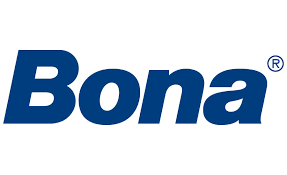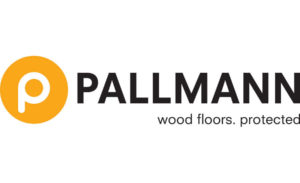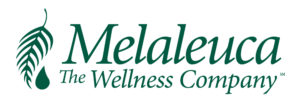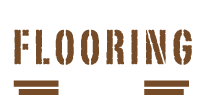CARE + MAINTENANCE OF YOUR NEW URETHANE FINISH HARDWOOD FLOOR
General Guidelines for all URETHANE Hardwood Flooring as recommended by the NWFA (National Wood Floor Association):
Now that you have beautiful new hardwood flooring in your home, proper care is essential to keeping your floors beautiful for a long time. Our hardwood floors are high quality premium floors, meeting or surpassing the industry standard. For maximum performance, under the conditions that your floors have been properly acclimated, installed and that they will be maintained, following the industry wide instructions below.
GENERAL CLEANING
Vacuum or sweep the floor as often as needed to remove grit and dirt before they scratch or are ground into the floor’s surface. Vacuum only with brush or felt type attachments. Never use a vacuum with a beater bar head.
To clean the whole floor, use a cleaner specially formulated for hardwood floors and follow the directions. Spray and mop dry. Do not allow excess cleaner to remain on the floors. Do not use steam cleaner.
For spot cleaning, apply cleaner onto a clean cloth and rub onto the spot. Do not use abrasive pads or cleaners as they may damage the finish.
Never clean your hardwood floor with water or wet mop. The water will get into the floor and then dry out. The repeated wet-dry process will cause your floor to deteriorate very quickly, especially along the edges of floor boards.
Please do not use oil soap, wax products, or cleaners that contain acidic material such as lemon or vinegar.
Remove any liquid spills right away using a towel or cloth. Other sources of water might be a leaking pipe, refrigerator malfunction, blocked drainage, open door or window when raining, condensation, or too much liquid cleaner. Damage is unavoidable when excess water gets onto the wood floor, but drying it immediately may limit the damage to a minimum.
Recommended Cleaners:
TRY TO AVOID SCRATCHES
Use floor protectors on the feet of furniture to avoid scratches. There are several sizes of floor protector pads available. Certain types of casters on furniture may damage hardwood flooring. Barrel-type caster wheels or wide, flat glides are best for protecting your hardwood floor. If your furniture does not have the right type of casters, we recommend that you change them.
When moving heavy furniture or appliances, use extra caution to avoid scratching, indenting, and gouging. Some objects may be too heavy to be moved across a hardwood floor without proper floor covering, such as sheets of wood panels.
If your floor abuts exterior doors, put outside doormats at the entrances to keep dirt and moisture from being tracked in.
Inside, you may want to add area rugs to further prevent dirt and moisture from being tracked onto your hardwood floor. Make sure the backing of the rugs is soft. Hard and rigid backing may act like a sandpaper and scratch your floor. Don’t use rubber or impermeable plastic mats as they may trap the moisture causing the floor to discolor or deteriorate. Always use permeable material.
Spike or stiletto high-heel shoes may cause denting and related damage to hardwood floors, due to the extremely high compressive force they generate.
Keep pets’ nails trimmed and smooth..
RETAINING COLOR
The color shade may change over time, just like your clothing materials, due to the sun and its UV light. Use drapery or tinted glass to avoid strong sunlight. Too much sunlight may produce too much heat, causing the floor to dry out, the color to fade and the floor to contract or its surface to split. The color of the floor under area rugs, furniture or any other objects that might block the sunlight, will differ from the rest of the floors over time. If that’s a concern to you, these objects should be moved around occasionally to allow the sunlight to shine evenly over the entire floor.
LIMIT EXPANSION AND CONTRACTION
Environmental changes can adversely impact your hardwood floor. With changes in humidity, the MC of the wood changes, resulting in expansion or shrinkage of the flooring. Simply put, the floor will expand when the interior humidity increases and shrink when humidity decreases. The goal is to keep the expansion and contraction to a minimum by maintaining a consistent relative humidity throughout the house.
The interior humidity should be kept at 30% – 50% as recommended by NWFA Installation Guidelines, or within a range that you and your installer have discussed and agreed upon, which is practical in your geographical region, San Diego has not been a problem for us.
Do not use equipment to add or remove moisture to or from the interior without regulating it.
Wood flooring should be one of the last jobs completed on any construction project. Future remodeling that may generate lots of moisture within the interior, such as masonry, plastering, texturing and painting, should be properly monitored and may require extra heating and dehumidification equipment to keep the interior humidity at the desired level.
Heat from a fireplace, wood stove, electric heater, or sunbeams can dry out the floor in certain areas. Keep the floor temperature below 85oF in any event, by adding area rugs in front of the heat source and using draperies to shade the strong sunlight.
The subfloor should be dry and structurally sound at all times. Make sure the vapor retarder won’t be damaged by other projects that might allow moisture to seep in. Basements and crawl spaces must be dry and well ventilated. If radiant heat is installed, make sure the temperature of the subfloor does not exceed 85°Fahrenheit.
STAIN REMOVING TIPS
Stain spots caused by food, grease, etc.: Place a NO WAX cleaner on a clean cloth to remove the stain or spot. For stubborn stains, rub the stain spot with a dampened pad with cleaner. The pad should not be abrasive enough to scratch the finish. Most problems can be prevented or minimized by wiping up any spills immediately. When removing a spot, always begin at the outer edge and work towards the center to prevent the spot from spreading.
Chewing gum or candle wax: Apply a plastic bag filled with ice on top of the deposit until it becomes brittle enough to crumble off. After the deposit has been removed from the surface of the floor, clean the entire area with a NO WAX floor cleaner.
REPAIRING MINOR SCRATCHES
Refurbishing scratched areas: Most scratches can be repaired with the touch-up kit. Since your floors are factory finished, individual boards that are heavily gouged or damaged can be replaced. For repairing small areas where scratches extend over several boards, tape off the repair area before applying stain/urethane finish to prevent the finish from splattering or being transferred to the surrounding undamaged boards. The masking tape should be placed
at the end of joints and along the outer edge of each board surrounding the scratched or worn area to be repaired.
Please call us if you get in over your head: 858-735-4198
REDUCING SQUEAKING NOISE
When interior humidity is high, the floor will absorb moisture and expand, and the edges of boards may rub together, producing a squeaky sound. Care should be taken to control humidity levels within the 30%-50% range (or other range determined before the flooring was installed.) To quiet it temporarily, sprinkling a liberal amount of talcum powder between the squeaking boards will usually quiet things down. For glued-down floors with squeaking boards or loose popping sounds, inquire about the standard adhesive repair kit or epoxy injection that we could perform for you.
In some cases we have found that additional work has been done after our installation that obstructed the expansion joints around the perimeter of your floors by fitting tile or cabinets on top of the flooring. This can negatively impact your floor and cause squeaking or even the lifting of your floor.
If you notice any of these conditions, please call San Diego Flooring Pros as soon as possible 858-735-4198. The sooner you combat the problem, the less invasive we may need to be to correct the situation.





